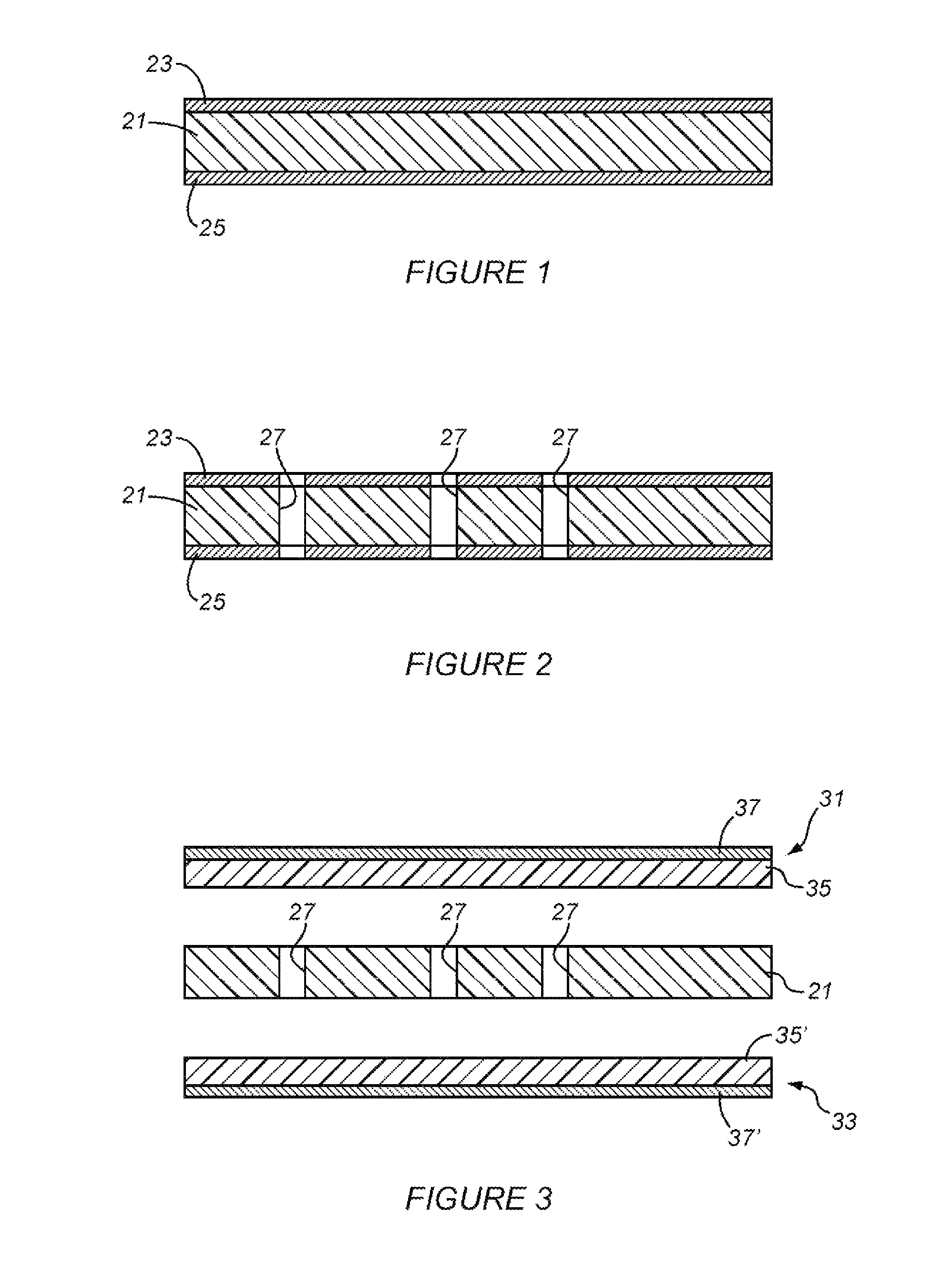Power core for use in circuitized substrate and method of making same
a power core and circuitized substrate technology, applied in the field of circuitized substrates, can solve the problems of inability to resist stress, device or electrical connection between them, and the non-optimal (excessive) thermal expansion coefficient of the overall pcb and the individual layers, etc., to achieve the effect of improving the circuitized substrate ar
- Summary
- Abstract
- Description
- Claims
- Application Information
AI Technical Summary
Benefits of technology
Problems solved by technology
Method used
Image
Examples
Embodiment Construction
[0048]For a better understanding of the present invention, together with other and further objects, advantages and capabilities thereof, reference is made to the following disclosure and appended claims in connection with the above-described drawings. It is understood that like numerals will be used to indicate like elements from drawing figure to drawing figure.
Definitions
[0049]The following terms will be used herein and are understood to have the meanings associated therewith.
[0050]By the term “circuitized substrate” as used herein is meant to include multilayered structures including a plurality of dielectric layers and a plurality of circuitized conductive layers typically arranged in an alternating manner. Examples of dielectric materials suitable for use in such structures include fiberglass-reinforced or non-reinforced epoxy resins, poly-tetrafluoroethylene (Teflon), polyimides, polyamides, cyanate resins, photoimageable materials, ceramic and other like materials, or combina...
PUM
| Property | Measurement | Unit |
|---|---|---|
| size | aaaaa | aaaaa |
| size | aaaaa | aaaaa |
| dielectric constant | aaaaa | aaaaa |
Abstract
Description
Claims
Application Information
 Login to View More
Login to View More - R&D
- Intellectual Property
- Life Sciences
- Materials
- Tech Scout
- Unparalleled Data Quality
- Higher Quality Content
- 60% Fewer Hallucinations
Browse by: Latest US Patents, China's latest patents, Technical Efficacy Thesaurus, Application Domain, Technology Topic, Popular Technical Reports.
© 2025 PatSnap. All rights reserved.Legal|Privacy policy|Modern Slavery Act Transparency Statement|Sitemap|About US| Contact US: help@patsnap.com



